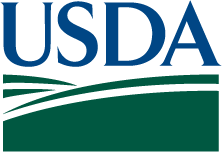
Natural Resources
Conservation Service
Ecological site R156BY100FL
Subaqueous Freshwater Riverine Habitats
Last updated: 2/07/2025
Accessed: 12/21/2025
General information
Provisional. A provisional ecological site description has undergone quality control and quality assurance review. It contains a working state and transition model and enough information to identify the ecological site.
MLRA notes
Major Land Resource Area (MLRA): 156B–Southern Florida Lowlands
This area is in the Floridian section of the Coastal Plain province of the Atlantic Plain. It is on nearly level lowlands. A few hummocks rise 3 to 6 feet (1 to 2 meters) above the general level of the landscape. Elevation ranges from near sea level to 26 feet (8 meters).This area is a dominantly wetland ecosystem that has been heavily influenced by human activity. It supports hummock and slough wetland vegetation. Remaining native savanna and scrub areas consist of native grasses, forbs, sedges, and a few scattered pines. Slash pine and cabbage palm are the dominant overstory species. Saw palmetto, cordgrasses, and bluestems make up the understory. Major wildlife species include white-tailed deer, feral hog, gray fox, raccoon, opossum, armadillo, rabbit, tree squirrel, wild turkey, bobwhite quail, mourning dove, Florida mallard, and woodpecker.
Classification relationships
All portions of the geographical range of this site falls under the following ecological / land classifications including:
-Environmental Protection Agency's Level 3 and 4 Ecoregions of Florida: 75 Southern Coastal Plain; 75d Eastern Florida Flatwoods (Griffith, G. E., Omernik, J. M., & Pierson, S. M., 2013)
-Florida Natural Area Inventory, 2010 Edition: Riverine (FNAI, 2010)
Ecological site concept
The Subaqueous Freshwater Riverine Habitat are typically permanently submerged sites found as natural, flowing waters from their source to the downstream limits of tidal influence, bounded by channel banks. Water depth is variable depending on the time of year and will support both subaqueous and water emergent vegetation. These sites are highly used for recreation and support a high diversity of wildlife. Notable sites in this MLRA include the upper St. Johns River as well as multiple large canals which connect lakes and restoration areas.
Associated sites
| R156BY150FL |
Subaqueous Freshwater Lacustrine Habitats This site feeds and is fed by the riverine habitats. |
|---|---|
| R156BY011FL |
Mineral Floodplain Marshes and Swamps This site will occur within the floodplain of the river system and support permanent high water tables and frequent slow moving surface water for hydric mineral soil development. |
| R156BY010FL |
Histisol Floodplain Marshes and Swamps This site will occur immediately adjacent in the floodplain of the river system and support permanently high water tables and frequent slow moving surface water for histisol soil development and perpetuance. |
Similar sites
| R156BY150FL |
Subaqueous Freshwater Lacustrine Habitats The Subaqueous Freshwater Lacustrine Habitats may be confused with the Subaqueous Freshwater Riverine Habitats during periods of extremely slow moving water in the very flat landscape of MLRA 156B. |
|---|
Table 1. Dominant plant species
| Tree |
Not specified |
|---|---|
| Shrub |
Not specified |
| Herbaceous |
(1) Vallisneria americana |
Click on box and path labels to scroll to the respective text.
Ecosystem states
| T1A | - | Dredging |
|---|---|---|
| T1B | - | Damming |
| R2A | - | Fill/ Vegetation Replanting |
| T2A | - | Damming |
| R3A | - | Dam Removal |
State 1 submodel, plant communities
| 1.1A | - | Decrease in Water Quality |
|---|---|---|
| 1.1B | - | Decrease in Water Quality |
| 1.2A | - | Increase in Water Quality / Vegetation Replanting |
| 1.2B | - | Decrease in Water Quality |
| 1.3A | - | Increase in Water Quality / Vegetation Replanting |
State 2 submodel, plant communities
| 2.1A | - | Deposition of Spoil Material |
|---|